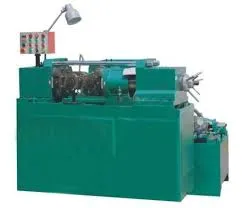
-
 Afrikaans
Afrikaans -
 Albanian
Albanian -
 Amharic
Amharic -
 Arabic
Arabic -
 Armenian
Armenian -
 Azerbaijani
Azerbaijani -
 Basque
Basque -
 Belarusian
Belarusian -
 Bengali
Bengali -
 Bosnian
Bosnian -
 Bulgarian
Bulgarian -
 Catalan
Catalan -
 Cebuano
Cebuano -
 Corsican
Corsican -
 Croatian
Croatian -
 Czech
Czech -
 Danish
Danish -
 Dutch
Dutch -
 English
English -
 Esperanto
Esperanto -
 Estonian
Estonian -
 Finnish
Finnish -
 French
French -
 Frisian
Frisian -
 Galician
Galician -
 Georgian
Georgian -
 German
German -
 Greek
Greek -
 Gujarati
Gujarati -
 Haitian Creole
Haitian Creole -
 hausa
hausa -
 hawaiian
hawaiian -
 Hebrew
Hebrew -
 Hindi
Hindi -
 Miao
Miao -
 Hungarian
Hungarian -
 Icelandic
Icelandic -
 igbo
igbo -
 Indonesian
Indonesian -
 irish
irish -
 Italian
Italian -
 Japanese
Japanese -
 Javanese
Javanese -
 Kannada
Kannada -
 kazakh
kazakh -
 Khmer
Khmer -
 Rwandese
Rwandese -
 Korean
Korean -
 Kurdish
Kurdish -
 Kyrgyz
Kyrgyz -
 Lao
Lao -
 Latin
Latin -
 Latvian
Latvian -
 Lithuanian
Lithuanian -
 Luxembourgish
Luxembourgish -
 Macedonian
Macedonian -
 Malgashi
Malgashi -
 Malay
Malay -
 Malayalam
Malayalam -
 Maltese
Maltese -
 Maori
Maori -
 Marathi
Marathi -
 Mongolian
Mongolian -
 Myanmar
Myanmar -
 Nepali
Nepali -
 Norwegian
Norwegian -
 Norwegian
Norwegian -
 Occitan
Occitan -
 Pashto
Pashto -
 Persian
Persian -
 Polish
Polish -
 Portuguese
Portuguese -
 Punjabi
Punjabi -
 Romanian
Romanian -
 Russian
Russian -
 Samoan
Samoan -
 Scottish Gaelic
Scottish Gaelic -
 Serbian
Serbian -
 Sesotho
Sesotho -
 Shona
Shona -
 Sindhi
Sindhi -
 Sinhala
Sinhala -
 Slovak
Slovak -
 Slovenian
Slovenian -
 Somali
Somali -
 Spanish
Spanish -
 Sundanese
Sundanese -
 Swahili
Swahili -
 Swedish
Swedish -
 Tagalog
Tagalog -
 Tajik
Tajik -
 Tamil
Tamil -
 Tatar
Tatar -
 Telugu
Telugu -
 Thai
Thai -
 Turkish
Turkish -
 Turkmen
Turkmen -
 Ukrainian
Ukrainian -
 Urdu
Urdu -
 Uighur
Uighur -
 Uzbek
Uzbek -
 Vietnamese
Vietnamese -
 Welsh
Welsh -
 Bantu
Bantu -
 Yiddish
Yiddish -
 Yoruba
Yoruba -
 Zulu
Zulu
ODM Thread Rolling Machine - High Precision and Efficiency
Understanding ODM Thread Rolling Machines and Their HS Code
Thread rolling is a key manufacturing process used in various industries to create high-strength threads on fasteners and components. One of the critical tools employed in this process is the ODM (Original Design Manufacturer) thread rolling machine. These machines are engineered to produce precise and durable threaded products, enhancing both efficiency and quality in production.
An ODM thread rolling machine is designed to accommodate a variety of thread forms, including external and internal threads, making it versatile for different applications. The process operates by deforming the material, typically metal, between two or more rollers, which shape the threads without removing material. This cold forming technique results in threads that possess enhanced mechanical properties, such as increased tensile strength and fatigue resistance, compared to those produced by cutting methods.
The significance of ODM thread rolling machines has led to their classification under specific Harmonized System (HS) codes, which are used globally to categorize products for trade and tariff purposes. Understanding the HS code for these machines is crucial for manufacturers and importers as it determines the applicable duties, taxes, and regulatory requirements in various countries.
odm thread rolling machine hs code

Generally, machines used for thread rolling fall under the HS Code category 8457, which encompasses various types of machinery for working metal, including forging machines, presses, and bending machines. More specifically, ODM thread rolling machines can be categorized under subcategories that detail their specific operational functions and technical configurations.
Manufacturers must ensure they correctly classify their equipment under the appropriate HS code to avoid potential legal and financial repercussions. Misclassification can lead to issues such as fines, delays in customs clearance, and penalties related to incorrect duty payments. Therefore, understanding the nuances of the HS code system is vital for maintaining compliance in international trade.
Moreover, the global market for ODM thread rolling machines has been expanding as industries, such as automotive, aerospace, and construction, demand high-quality threaded components. The rise of e-commerce and the globalization of supply chains have further fueled this demand, making it essential for manufacturers to tap into international markets while adhering to trade regulations.
In conclusion, the ODM thread rolling machine plays a pivotal role in modern manufacturing, contributing to the production of robust threaded components. Understanding its classification under the HS code is essential for manufacturers to navigate international trade efficiently. As the global demand for high-quality fasteners continues to grow, the importance of these machines and compliance with HS coding will only increase, driving innovation and excellence in manufacturing practices.
